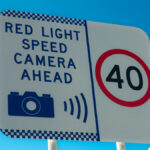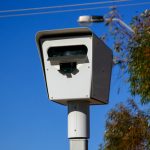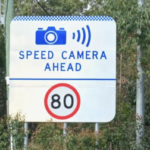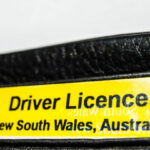Can I Be Fined for Driving Too Slowly?

Ever been stuck behind a vehicle driving well below the speed limit on a one-lane road? We’ve all been there.
Of course, the best advice is not to take risks trying to overtake unsafely, and to recognise their may be reasons for why the vehicle is going so slowly. Towing a large load, engine problems, going up a steep hill with insufficient power, distractions like a crying baby in the back seat may be some of many such reasons.
But what does the law say about driving too slowly for the conditions? And more specifically, can it amount to a traffic offence and thereby attract a fine?
Driving too slowly
The short answer is: unreasonably driving too slowly for the conditions can amount to a traffic offence in New South Wales, and indeed across Australia.
In that regard, regulation 125 of the Road Rules (2014) – which is a piece of legislation enacted in all Australian jurisdictions – bears the title “Unreasonably obstructing drivers or pedestrians” and provides as follows:
(1) A driver must not unreasonably obstruct the path of another driver or a pedestrian.
A “Driver” includes a person in control of a vehicle.
(2) For this rule, a driver does not unreasonably obstruct the path of another driver or a pedestrian only because–
(a) the driver is stopped in traffic, or
(b) the driver is driving more slowly than other vehicles (unless the driver is driving abnormally slowly in the circumstances).
The penalty for this offence is $275 but it doesn’t attract demerit points.
This road rule is broad and general as far as traffic regulations go – particularly when compared to speeding which is meticulously detailed.
However, the legislation does include this example of what would constitute someone driving “abnormally slowly”, explaining that:
“A driver driving at a speed of 20 kilometres per hour on a length of road to which a speed limit of 80 kilometres per hour applies when there is no reason for the driver to drive at that speed on the length of road.”
Driving to conditions
It’s important to remember that you should always drive to conditions, and not necessarily drive the full speed limit if you’re not comfortable.
In situations where you might be on an unfamiliar winding country road, worried about animals wandering out in front of you in rural areas, or driving in heavy rain or fog, it is acceptable to take it easy for safety reasons. If drivers behind you get annoyed, then simply pull over when it is safe to do so, and let them pass.
Tailgating is a traffic offence
Drivers who are impatient with others going ‘too slowly’ on the road need to be aware that this is not a defence if you break road rule number 126, which stipulates that:
“A driver must drive a sufficient distance behind a vehicle travelling in front of the driver so the driver can, if necessary, stop safely to avoid a collision with the vehicle.”
This offence can attract a fine of $464 and three demerit points.
Need advice about an alleged traffic offence?
If you are unsure about whether your alleged driving or riding conduct amounts to an offence, it is a good idea to contact an experienced, specialist traffic lawyer for case-specific advice and assistance with your options.







